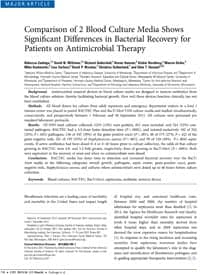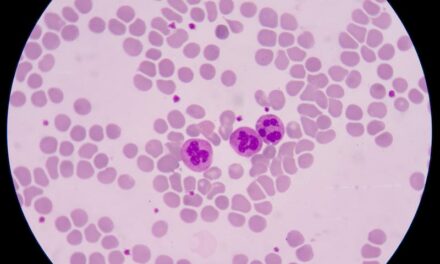
The study—a head-to-head, prospective comparison of two aerobic blood culture media regularly used in the hospital setting to recover organisms that cause this serious and deadly blood infection—highlights the importance of antimicrobial removal systems in contemporary blood culture media to rapidly and accurately recover the organisms causing infection, to aid physicians in ultimately making treatment decisions for patients.
Led by researchers at Hennepin County Medical Center, Minneapolis, the study found that the BD BACTEC™ Plus Aerobic medium, a blood culture product from BD (Becton, Dickinson and Co), Franklin Lakes, NJ, had faster time to detection and increased overall bacterial recovery from blood cultures where antimicrobials had been administered to the patient within the 48 hours before blood culture collection.
“Bloodstream infections, such as sepsis, are a serious and growing problem facing the medical community; they represent a leading cause of death both in the US and worldwide, and significantly impact overall health care costs,” says Tobi Karchmer, MD, worldwide vice president, medical affairs, BD Diagnostics – Diagnostic Systems. “This new study provides evidence that hospitals using sensitive and rapid blood culture media can make a difference in helping physicians, who are faced with making treatment decisions for severely ill patients, diagnose sepsis as quickly and accurately as possible to improve patient care and outcomes.”
The independent, hospital-wide study represents the first clinical, head-to-head blood culture comparison study in 15 years, according to the company.
The study focused on the impact of prior antimicrobial exposure on bacterial recovery and time to detection using patient specimens, a key challenge facing critical care physicians and other health care professionals in addressing sepsis. The authors found that antibiotic administration prior to blood culture collection was common, with 51% of patients in the General Wards receiving antibiotics within 4 hours prior to blood culture specimen collection. In the medical intensive care unit (MICU), this figure jumped to 82 percent.1
During the 8-month study period, a total of 9,395 blood cultures were collected and evaluated from adult patients admitted into the hospital’s in-patient units and emergency departments, resulting in 1,219 (13%) positive cultures, of which 831 met the study inclusion criteria.1 Researchers concluded that the BD BACTEC Plus Aerobic medium had statistically significant higher recovery rates when antibiotics had been administered within 4 hours prior to specimen collection: 91% (216/237) of pathogens isolated and a faster time to detection – an average of 4.4 hours faster – as compared to recovery rates of another frequently used aerobic blood culture medium (41% or 98/237) evaluated in the study.1 Similar differences in recovery and time to detection in the presence of antibiotics were observed across all time points evaluated.
- Zadroga R, Williams DN, Gottschall R, Hanson K, Nordberg V, Deike M, Kuskowski M, Carlson L, Nicolau DP, Sutherland K, Hansen GT. Comparison of 2 blood culture media shows significant differences in bacterial recovery for patients on antimicrobial therapy. Clinical Infectious Diseases, 2013.
[Source: BD]





